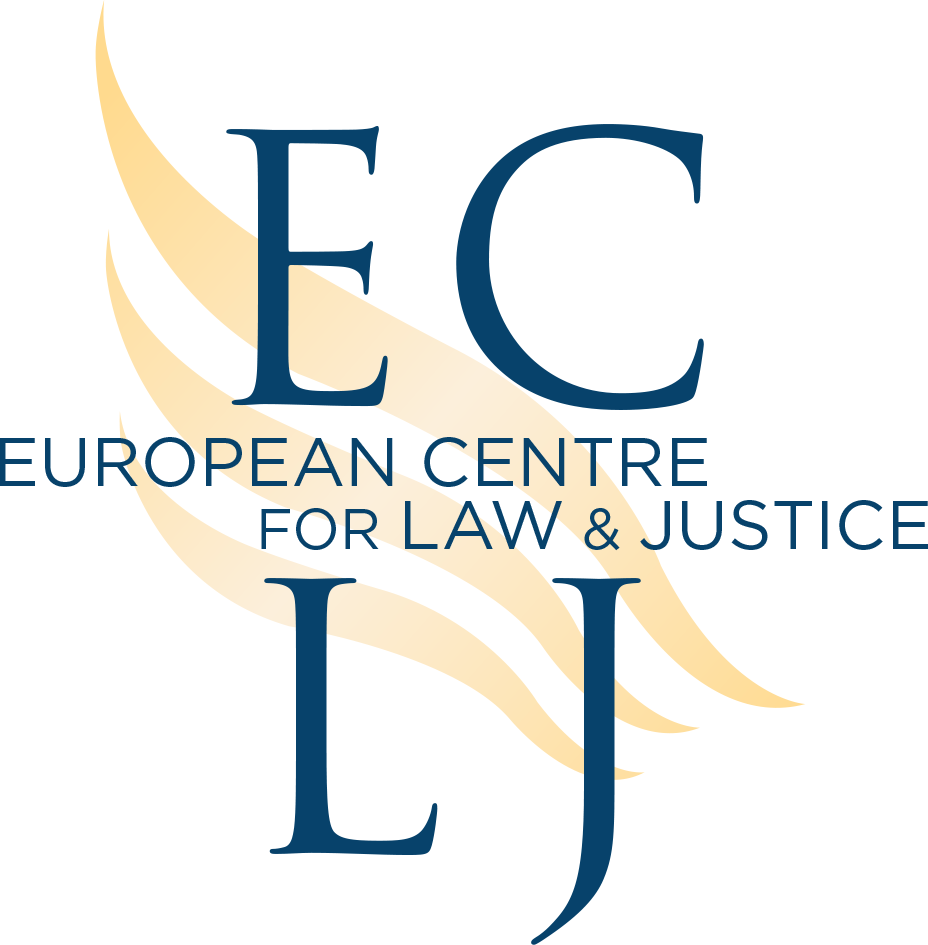Cassar v Malta: The right to marry for transgendered people before the European Court
Ten years after its famous ruling in the case of Christine Goodwin v UK, the European Court of Human Rights (ECHR) is required again to rule on the compatibility of the impediments that prevent transgender people from marrying a person who is of the same biological sex with the European Convention on Human Rights. While the Christine Goodwin judgment concerned the United-Kingdom, this new case, Joanne Cassar v. Malta (n° 36982/11), concerns the small and deeply catholic island of Malta. The ECLJ has been authorized to intervene in this case as third party (amicus curia) and has submitted its written observations on 18 June 2012.
The requesting party, biologically male, legally became a woman after surgical intervention.
She had her birth certificate amended accordingly and then took steps to legally marry a man; however, the Maltese authorities have refused this marriage on the grounds that the alteration of the birth record was intended only to protect her privacy by making her everyday life easier, but not to alter legal effects related to marriage. The Maltese Constitutional Court ruled that the impediment to marriage is justified, but considered the absence of a provision in Maltese law allowing for a “registered partnership” to be a violation of Articles 8 and 12 of the Convention, which guarantee the right to private and family life, and the right to marry and found a family. In any case, the request is no longer needed, as the partners have since ended their relationship.
Before the European Court, the requesting party complains of an infringement of those same Articles 8 and 12, as well as of Article 13 of the Convention, which guarantees the right to an effective remedy. A judgment against Malta would oblige this country to separate marriage from family and acknowledge the supremacy of social identity (gender) over biological identity (sex).
This issue is not new to the European Court, its jurisprudence in this area has evolved since its first judgment of 17 October 1986, Rees v. United Kingdom, in which the Court concluded that the traditional concept of marriage lies in a union “between persons of opposite biological sex;” Article 12 of the Convention explicitly states that “[m]en and women of marriageable age have the right to marry and to found a family, according to the national laws governing the exercise of this right.” This position was upheld in a series of cases until the famous Grand Chamber judgment unanimously adopted on 11 July 2002, (Christine Goodwin v. United Kingdom) in which the Court declared that it was “not persuaded that at the date of this case it can still be assumed that these terms [man and woman] must refer to a determination of gender by purely biological criteria” (¶ 100). In so doing, the Court explicitly made social sex (that is to say the kind that refers to the social identity experienced by a person) prevail over biological sex. This adherence to the “gender theory” is an ideological choice subject to controversy. By stating this proposition, the Court has interpreted the words man and woman in a non-ordinary sense contrary to the context in which these words were used in Article 12 which addresses the foundation of a family. However, two people of different biological sex are required to start a family.
The Court gave its reason for the reversal of its jurisprudence: “In the twenty first century the right of transsexuals to personal development and to physical and moral security in the full sense enjoyed by others in society cannot be regarded as a matter of controversy requiring the lapse of time to cast clearer light on the issues involved. In short, the unsatisfactory situation in which post-operative transsexuals live in an intermediate zone as not quite one gender or the other is no longer sustainable” (¶ 90).
In addition to the substantive issues, making the Cassar v. Malta a particularly interesting case, is the change of the context in relation to the Christine Goodwin judgment, vividly manifest by the fact that the Maltese Constitutional Court refused to give deference to this Grand Chamber decision, and stated that the decision was oflittle relevance as it was based only on social changes and subject to social engineering.[1] Such an accusation toward a Grand Chamber ruling of the European Court must provoke serious reflection. In fact, this reflection on the authority of the Court and the limits of its role in social engineering is already widely occurring within the Council of Europe, it is found in the current reform process of the Court, and extends beyond the Christine Goodwin case. Still today this judgment is indicative of the crisis facing the Court in recent years.
What was possible for the Court to impose in 2002 would most likely be much less possible ten years later. Moreover, the cultural context of Maltese, where divorce has only been allowed since 2011, is very different from that of the United Kingdom, which has given rise to almost all the cases regarding transsexuality.
In its written observation, by analyzing the presuppositions and consequences of the Christine Goodwin judgment, the ECLJ tried to explain one of the fundamental causes of the crises of the Court: the subjectification of Human Rights. This subjectification, which removes human rights from their objective and universal character, has led to their brittleness and their fragmentation into a multitude of non-homogeneous individual rights. Faced with this phenomenon, which is particularly evident in the extensive interpretation of Article 8 concerning privacy, the restoration of the authority of the Court requires the preservation, even the rescue, of the original philosophy of the Convention.
Thus, in its observations, the ECLJ has reiterated that human rights derive their authority from their adequacy to the human nature ; they are the result of what man is. Human rights focus primarily on all the characteristics (capacities) which distinguish man from animal: a capacity to think, to express themselves, to live in society, to pray, and to found a stable family, etc. Human rights are intended to guarantee the exercise of human capacities, not to grant purely theoretic or symbolic rights. Thus, human rights are not arbitrarily defined according to the will of an individual concerning each subject. Subjectivism relative to individualism, by rejecting the reference to the human nature, leads to the destruction of the basis and philosophy of human rights.
This phenomenon of the subjectification of human rights is clearly visible regarding the natural right to marry, a right which exists because it is in the nature of a man and a woman to found a family within and with the support and protection of society. Thus, the European Convention on Human Rights and all major international instruments define the right to marry as an institution designed to recognize and protect the family as the natural and fundamental group unit of society.[2] The Universal Declaration of Human Rights and the International Covenant on Civil and Political Rights state that “the family is the natural and fundamental group unit of society and is entitled to protection by society and the State.” Moreover, the right to marry is almost systematically defined as the “right to marry and found a family”: “to marry and found a family” is one and the same right, not two associated rights,[3] the protection of private and family life is guaranteed independently elsewhere (Art. 8 of the European convention). The numerous privileges linked to the marriage (taxation, etc.) are not given to a couple by society in recognition of mutual affection of the spouses, but because of their contribution to the society in the form of the children that they generate, raise, feed, and educate, i.e. in counterpart of their contribution to the common good of society. The proof is that a disunited couple that has a lot of children receive more from society than a united couple without any children. Thus, a couple, whom is manifestly unable to contribute to society by the foundation of a family, has not in itself a reason to oblige society to give the social privilege related to marriage that are aimed at protecting and facilitating family life. It would be an injustice for society to be required to grant those privileges to couples that do not provide for new generations, but only presents a precarious witness of their mutual affection.
The purpose of the marriage is not to give a social recognition to the mutual affection of the spouses. In law, this affection belongs only to the private life, and it would be absurd to pretend that there is a right to have intimate sentiments recognized or endorsed by the State, especially while at the same time the State is asked not to break into individual’s private and sexual life.
However, the judgment in Christine Goodwin cut in two the right to marry and found a family; it separated marriage from its purpose which is family and the common good of society, and reduced it to a subjective individual right. The Court stated in that judgment that “Article 12 secures the fundamental right of a man and woman to marry and to found a family. The second aspect is not however a condition of the first and the inability of any couple to conceive or parent a child cannot be regarded as per se removing their right to enjoy the first limb of this provision” (¶ 98). In doing so, the Court completely deconstructed the right to marry and found a family. It is true that starting a family is not a legal requirement for marriage, it is more; it is its purpose. Marriage is the legal and social framework offered by the society to protect its natural and fundamental group unit, the family. By severing marriage from its purpose, the Christine Goodwin judgment destroyed the “de-finition” of marriage itself.[4] Severing the means from its purpose reduces the medium to only its formal materiality : the union of a man and a woman recognized by society. Marriage then becomes an end in itself, without external purpose outside of and greater than itself, its value becomes mainly symbolic. The issue then becomes access to the social symbol that marriage represents; it is this social symbol that is the target of the claims for LGBT marriage. Cut from its purpose—foundation of a stable family with the support of society—the right to marry no longer protects a specific ability of man, but only states a purely formal and symbolic law, with a legal status that is detached from its social utility.
Additionally, by severing marriage from its purpose, the requirement of sexual alterity imposed by Article 12 loses its rationale. The necessary difference between the sexes is only a condition for the realization of the purpose of marriage, as are the other conditions and impediments to marriage related to age or consanguinity. The condition of sexual alterity is objective; it stems from the definition of marriage itself, and does not imply any moral judgment on homosexuality.
The Christine Goodwin case has not only neutralized the reference to sexual alterity (man and woman) by adopting gender theory, but also severed marriage from its purpose and reduced it to a subjective and individual right ; it almost makes it an individual liberty of which Christine Goodwin would have been arbitrarily deprived. In so doing, the Court had considerably distanced itself from the letter and the spirit of the Article of the Convention.
The restoration the authority of judgments of the Court requires the restoration of the objective understanding of human rights, which is a condition for their universality. This objective understanding is realized by considering the subject of human rights (marriage, adoption or life) not as rights (legal abstractions, projection of an individual’s will in the civil order), but in their reality and concrete definition, i.e. in sum, by giving a primary attention to the matter that is subject of the right, rather that to the concept of right.
The more the Court ventures in its judgments to create new subjective rights (abortion, artificial procreation, euthanasia, etc.), the more is breaks down the unity of human rights and obscures their intelligibility, and ultimately weakens the European consensus supporting human rights. Subjectification of human rights destroys their objectivity and their intrinsic authority: they become cultural, relative, and subject to controversy.
Hopefully the Court will take the opportunity, in the case of CASSAR v. Malta, to correct its jurisprudence and reconnect with a more realistic and objective understanding of the right to marry and found a family. The refusal of the Supreme Court of Malta to take seriously the Christine Goodwin judgment is just one example, among others, of the increasing willingness of European states to moderate the “progressivism” of the Court in its interpretation of the Convention. This is clearly perceptible in the current reform process of the Court, as well as in the rejection of the draft recommendation of the Committee of Ministers on “the rights and legal status of children and parental responsibilities.”[5] The purpose of this project was precisely to redefine family law without reference to the principle of a family founded by a man and a woman, but in reference to a series of subjective interpersonal legal relationships linking children and a diversity of adults of varying status (biological/social/legal parents, heterosexual, homosexual, married, civil partnership, cohabitants, surrogate mothers, and gamete donors). According to the first article of the Recommendation, all of these relationships are “equalized” through their common subordination to the principle of non-discrimination erected as the corner stone of the Recommendation. This project faced strong opposition by a large number of European states who refuse to endorse a denaturing of family law.
In fine, the Court is too often trapped into the dialectic opposing progress and tradition. Its judgments are less considered by commentators in function of their legal accuracy (in light of the Convention on Human Rights) than in function of their degree of progressivism and “social advancement” that these judgments realize or promise. This dialectic, which refers more to Progress that to Justice, introduces the Court into a logic of division and battle of will that alters the quality of its judgments and contributes to the weakening of its authority.
Related Documents:
A Summary of the Facts as well as the complete Written Observations of the ECLJ are available in English and French on this page http://eclj.org/Cases/
* * *
The European Centre for Law and Justice (ECLJ) is an international, Non-Governmental Organization dedicated to the promotion and protection of human rights. The ECLJ has held special Consultative Status before the United Nations/ECOSOC since 2007. The ECLJ advocates in particular the protection of religious freedoms and the dignity of the person with the European Court of Human Rights and the other mechanisms afforded by the United Nations, the Council of Europe, the European Parliament, and the Organization for Security and Cooperation in Europe (OSCE).
The ECLJ bases its action on “the spiritual and moral values which are the common heritage of [European] peoples and the true source of individual freedom, political liberty and the rule of law, principles which form the basis of all genuine democracy” (Preamble of the Statute of the Council of Europe).
European Centre for Law and Justice
4, Quai Koch - 67000 Strasbourg, France
[1] “The Constitutional Court further considered that the European Court’s case-law was of little relevance, as the Goodwin case had been based on the fact that there had been major social changes in the institution of marriage since the adoption of the Convention. However, these social changes had not taken place in all of the States parties and could not be imposed by a judicial organ, which was not legislative, by means of “social engineering” (Cassar v. Malta, Statement of Facts p. 3).
[2] The Universal Declaration of Human Rights and the International Covenant on Civil and Political rights affirm that “the family is the natural and fundamental group unit of society and is entitled to protection by society and the State.” Article 16 of the Revised European Social Charter has the same goal “to ensuring the necessary conditions for the full development of the family, which is a fundamental unit of society, the Parties undertake to promote the economic, legal and social protection of family ....” The International Covenant on Economic, Social and Cultural Rights states in Article 10 that “the widest possible protection and assistance should be accorded to the family, which is the natural and fundamental group unit of society, particularly for its establishment and while it is responsible for the care and education of dependent children.”
[3] The Charter of Fundamental Rights of the European Union does not speak of a “right to marry” but the “right to marry and the right to found a family.”
[4] This is an example of the phenomenon d’ablation des causes finales (deletion of final causes) mentioned in Michel Villey, Philosophy of Law, Paris, Dalloz Sirey, t. 1, No. 166, p. 176.
[5] Draft Recommendation on the Rights and Legal Status of Children and Parental Responsibilities (with its explanatory memorandum) CJ-FA-GT3 (2010) 2 rev. 3 CJ-FA-GT3 (2010) 6.









